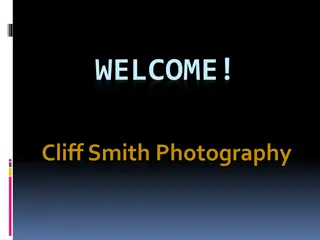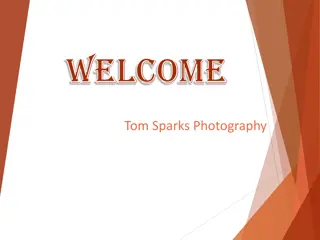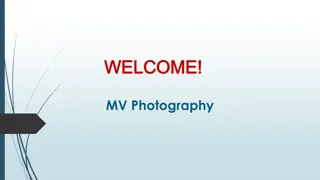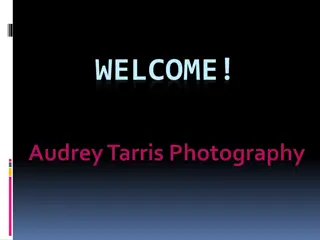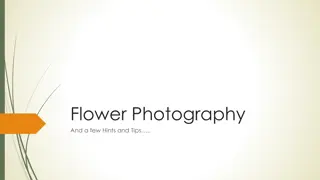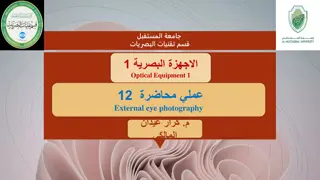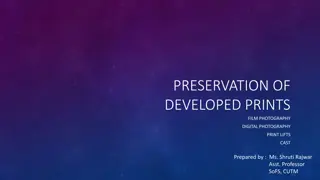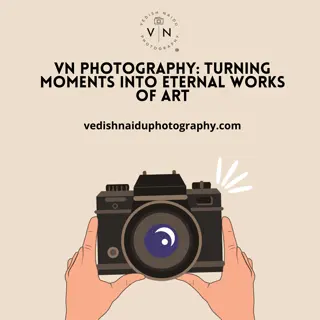Understanding Preservation and Techniques in Photography
Preservation of developed prints in film photography and digital photography involves methods such as film and digital photography, latent print lifts, and casting materials. Learn about the structure of cameras, the process of film photography, and how digital photography works with sensors and pixels.
Download Presentation

Please find below an Image/Link to download the presentation.
The content on the website is provided AS IS for your information and personal use only. It may not be sold, licensed, or shared on other websites without obtaining consent from the author. Download presentation by click this link. If you encounter any issues during the download, it is possible that the publisher has removed the file from their server.
E N D
Presentation Transcript
PRESERVATION OF DEVELOPED PRINTS FILM PHOTOGRAPHY DIGITAL PHOTOGRAPHY PRINT LIFTS CAST
INTRODUCTION INTRODUCTION Preservation of all relevant friction ridge information derived from evidence is mandatory. With regard to friction ridge detail, methods of preservation include : Film photography Digital photography Latent print lifts Use of casting material
STRUCTURE OF CAMERA Basic structure of camera. Conventional Camera uses film and digital camera uses sensors.
FILM PHOTOGRAPHY FILM PHOTOGRAPHY Film is composed of plastic sheets, coated with an emulsion containing silver halide salts bonded by gelatin. Grain size of silver halide salt determines the sensitivity of the film and resolution. Smaller grain size : slow film, requires longer exposure but produces a photograph of finer detail.
When silver halide salts are exposed to light, an invisible/ latent image is recorded on the film. Film-developing chemicals are then applied to the exposed film in order to visualize the latent images. This process causes the conversion of the silver halide salts to metallic silver. The metallic silver blocks the transmission of light and forms the black portion of a negative. Development Process
DIGITAL PHOTOGRAPHY DIGITAL PHOTOGRAPHY Digital Camera uses sensors for capturing images/photons. Sensor : an array of photosensitive diodes called photosites that capture photons . Two types : CCD and CMOS. The sensor for the digital camera contains millions of CCD cells on a grid. Each CCD records a color and a brightness (tonal) value that is stored as a series of numbers in the camera s memory.
WORKING OF SENSOR Build up of electron in photosite is converted to voltage Pixels are relayed in consecutive order and stored as an image in camera s memory Sensor captures photons and converts them to electron Voltage is converted to digital data as a pixel Generally, the greater the number of pixels on the CCD, the sharper the image. Pixel resolution : number of pixels in an image. For example, a 1000 x 1000 pixel image printed in a one- inch square would have 1000 pixels per inch (PPI).
FORMATS OF STORED PHOTOGRAPH Two main types of formats: compressed and uncompressed. Compressed : produce smaller image files that allow for more storage space. Images are reduced in size by the discarding or loosing pixel information. Because of this loss, compression file formats are referred to as lossy. The most common type of lossy compression format is JPEG(Joint Photographic Experts Group). Uncompressed : Those in which no pixel values are lost and the image can be retrieved in its original. Uncompressed file formats include TIFF (tagged information file format) and RAW formats (i.e., the camera s native or unprocessed file format). Require more storage space. For the purpose of recording friction ridge impressions, the use of TIFF or RAW images in digital photography is valuable to ensure that the integrity of the evidence is preserved
National Institute of Standards and Technology (NIST) established that the minimal resolution of an image taken by a digital camera that is used for latent impression evidence be 1000 PPI at 1:1. Another key aspect to digital photography in relation to the criminal justice community is the maintenance of the original digital image. The original image must be stored in an unaltered state. The original images can be stored on the following media: silver-based film negative, write-once compact disk-recordable (CD-R), and digital versatile disk recordable (DVD-R) . If digital processing is needed, it must be performed on a duplicate image.
LIFTERS AND CASTING Often the evidence that needs to be processed for latent prints is too large to be removed or is immovable and must be processed in the field. When this occurs, the impression should be imaged insofar as possible before lifting or casting procedures are used, to retrieve the latent print detail. The lift or cast can be imaged again for additional preservation. Prints lifted by the colored silicone will contain a reversed image and the transparent lift would not be a reversed image because the image can be viewed as it was on the surface.
FINGERPRINT LIFTERS FINGERPRINT LIFTERS Fingerprint lifters are used after the application of fingerprint powders. lift is usually made with tape or a similar lifting material having the correct amount of adhesive. Fingerprint lifters come in a variety of types that vary in color, size, flexibility, and tackiness (stickiness). Types of commercially available fingerprint lifts: Transparent tape lifters Hinge lifters Rubber-gelatin lifters
TRANSPARENT TAPE LIFTERS Transparent tape can be used to lift latent impressions. Mounted on either a white or black backing card. Tape should be unrolled in one continuous motion to avoid hesitation marks. Such marks may obscure lifted impressions. Care should be taken to avoid bubble formation.
HINGE LIFTERS Composed of lifting tape and a backing card hinged together on one side. The adhesive side of the hinge lifter is protected by a plastic cover. Exposed adhesive is placed on the developed print, lifted off the surface, and then folded back onto the hinged backer.
RUBBER-GELATIN LIFTERS Least tacky and most pliable. Commonly chosen when a latent impression is on a surface that is considered either fragile (peeling paint from a wall) or irregularly shaped (e.G., Doorknob). Rubber-gelatin lifters include : A cover sheet, A low-adhesion gelatin layer High-quality elastic sheet of rubber
CASTING MATERIAL Advantageous when dealing with patent impressions, powdered latent impressions on textured surfaces, or when processing the friction ridges of deceased individuals. Casting materials (silicone rubber) are available in several colors and have been manufactured to dry quickly and release easily. In addition to use in photographic recording, casting material can be powdered or inked and then lifted or impressed on lifting sheets. The resulting image will be a reverse position image of the friction ridges.
REFERENCES http://www.bvda.com/en/gellifters https://www.ncjrs.gov/pdffiles1/nij/225328.pdf https://www.sirchie.com






